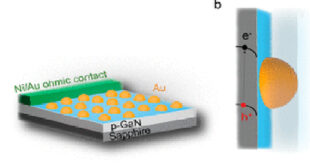Significance
The unique environment of nuclear power reactors is the presence of high energy particle radiation, which can lead to the degradation and failure of materials in critical components. So far, investigating the mechanical properties of metallic materials under neutron irradiation has been a long-standing challenge considering the limited irradiation sources, long experimental periods and high experimental costs. As an alternative, ion irradiation serves as a promising method to address the fundamental mechanisms related to irradiation effect. However, previous studies revealed that the mechanical characterization of ion-irradiated materials remains complicated since the typical irradiation-induced damage profile is limited to a thin sub-surface layer, which makes it difficult to establish the validity of conventional mechanical tests. Contemporary research has however established that the application of indentation stress-strain (ISS) relationships ensures the reliable measurement of the indentation modulus, indentation yield strength and flow stress evolution prior to the additional plastic deformation induced by the indenter itself and has accordingly been widely adopted to characterize the elasto-plastic properties of metallic materials.
On the contrary, a recent publication has revealed that in order to theoretically analyze the strain softening of ion-irradiated materials under spherical nano-indentation, the influence of defect annihilation and unirradiated substrate ought to be considered simultaneously. On this account, Professor Xiazi Xiao from the Central South University in collaboration with Dr. Dmitry Terentyev at the Nuclear Materials Science Institute in Belgium, and Dr. Long Yu at the Peking University in China developed a mechanistic model to characterize the spherical indentation stress-strain (ISS) relationships of ion-irradiated materials. Their work is currently published in Journal of the Mechanics and Physics of Solids.
To begin with, the team first developed the mechanistic model for the spherical ISS relationships with irradiation effect. After the introduction of the model calibration, four different sets of experimental data for unirradiated materials were considered to compare with the theoretical results available in the literature. To be specific, the ISS relationships of Fe-12Cr alloy before and after irradiation were compared between the model results and experimental data.
The authors reported that a good agreement was observed from comparisons between their model results with the experimental data of unirradiated materials (iridium, nickel, aluminum and copper) and ion-irradiated Fe-12Cr alloy. In particular, three fundamental deformation mechanisms were accounted for by the developed model, including the indentation size effect (ISE) ascribed to geometrically necessary dislocations (GNDs), irradiation hardening determined by irradiation-induced defects and strain softening affected by the removal of defects and unirradiated substrate.
In summary, the study demonstrated a comprehensive mechanistic model to retrieve the spherical ISS relationships for ion-irradiated materials. The model was proposed for the spherical indentation of ion-irradiated materials. The study addressed the indentation stress-strain relationships with irradiation effect where also the elastic deformation was considered for the indentation size effect. In a statement to Advances in Engineering, Professor Xiazi Xiao highlighted that the newly presented model offers a promising way to qualitatively compare the ISS relationships of ion-irradiated materials and uniaxial stress-strain curves of neutron-irradiated materials.

Reference
Xiazi Xiao, Dmitry Terentyev, Long Yu. Model for the spherical indentation stress-strain relationships of ion-irradiated materials. Journal of the Mechanics and Physics of Solids, volume 132 (2019) 103694.
 Advances in Engineering Advances in Engineering features breaking research judged by Advances in Engineering advisory team to be of key importance in the Engineering field. Papers are selected from over 10,000 published each week from most peer reviewed journals.
Advances in Engineering Advances in Engineering features breaking research judged by Advances in Engineering advisory team to be of key importance in the Engineering field. Papers are selected from over 10,000 published each week from most peer reviewed journals.


